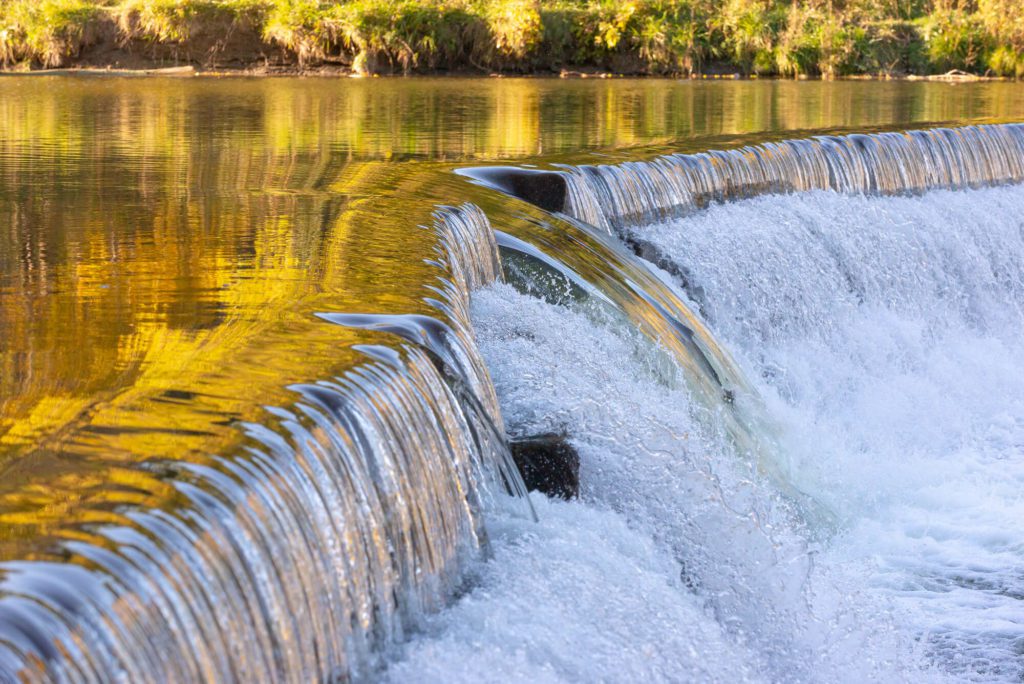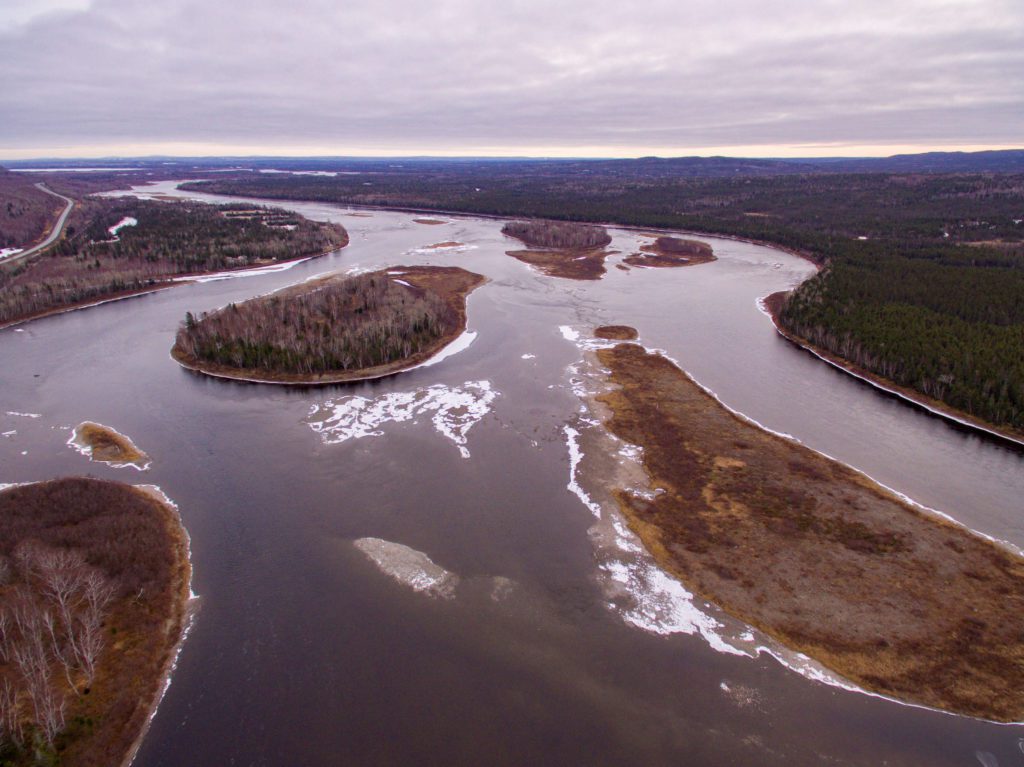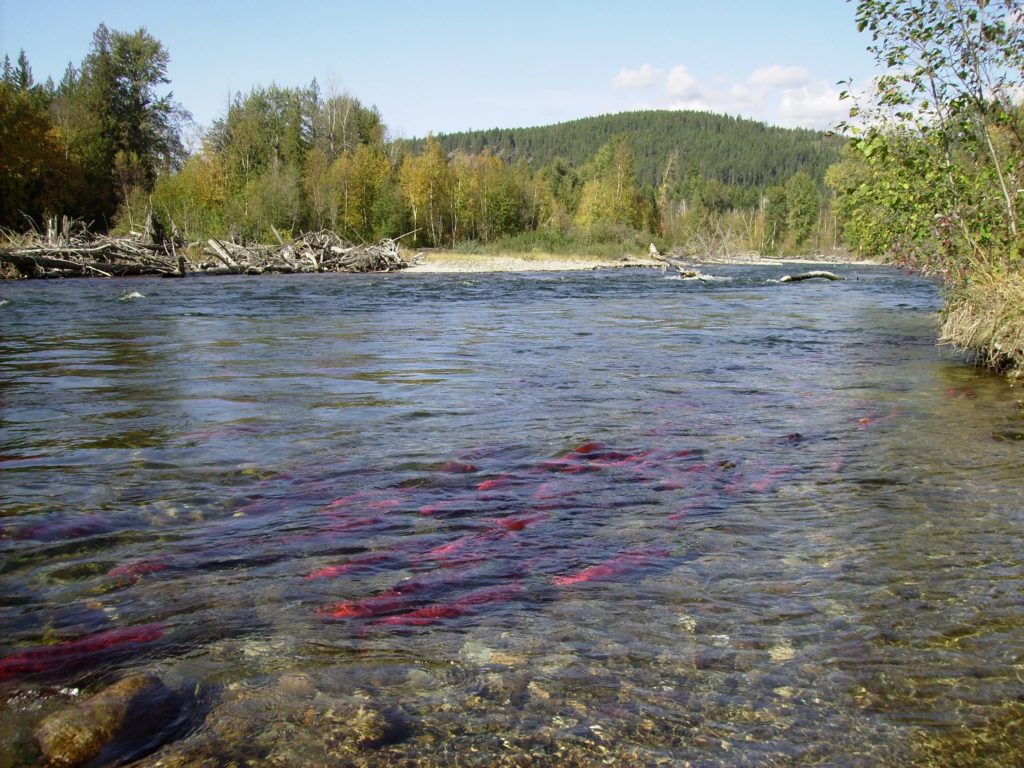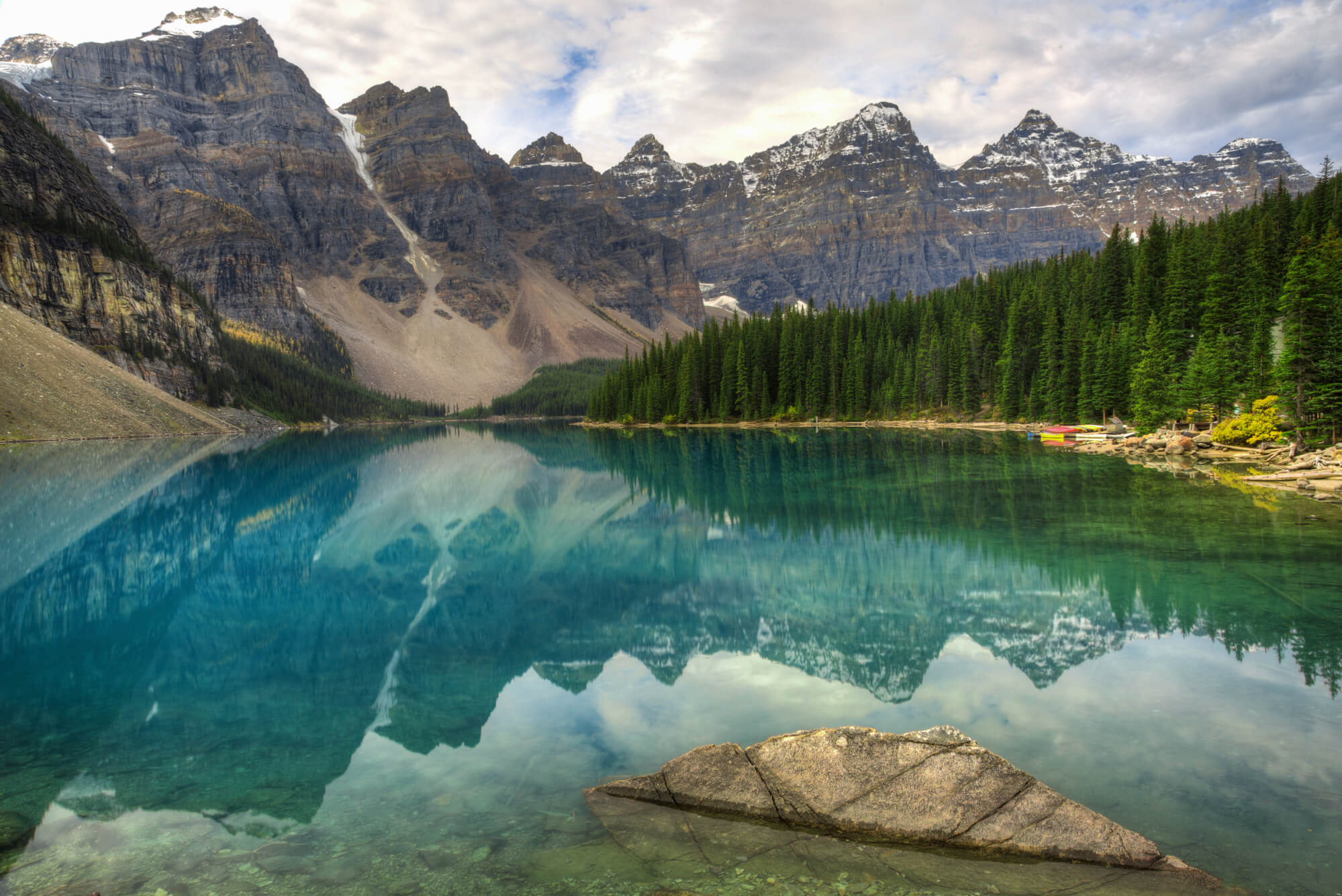Salmon are migrating fish, so pinning them down can be tricky. Still, the good news is they usually go back to the place where they were born every year.
So, if you’re looking for the best places to catch salmon in Canada, you’ve come to the right place. Let’s take a look at some of the locations and what type of salmon you might find there.
Best Salmon Fishing in Canada
Canada has many rivers with various types of salmon swimming in its waters. So, you should be able to find a location close to you to go fishing.
Here are some of the best locations to find and catch salmon in Canada.
Humber River, Toronto

The Humber River has an incredibly rich history. Many years ago, indigenous people settled along the banks of the river. They used it for transportation, farming, and, most importantly, fishing.
In the calm, pristine water of the Humber River, you can find freshwater salmon. Not just any freshwater fish; the Humber River has some of the biggest salmon in the wild, the Chinook salmon.
The average salmon in the river is anywhere between 15 and 40 pounds. So, if you want to catch a big fish, this river is a great place to start.
For the best chance of catching salmon, try planning your trip in the summer around late July. If you can’t make it in the summer, you can also try going in September.
To catch the biggest fish possible, you’ll need fishing equipment. Some of the equipment can include:
- Single-handed 9” fly rod
- Large arbor reels
- Waders
- Fishing vest
You’ll also need plenty of bait to make sure you get a fish. The most popular Chinook salmon bait is the Gold Star Yamashita plastic squid. It’s large enough for the fish to see it but small enough to not add weight to your rod.
Exploits River, Newfoundland

The west coast of Canada is famous for its salmon. Still, the east coast has many amazing locations with plenty of salmon.
One of these locations is the Exploits River. This is the longest river in Newfoundland. It’s also known as one of the biggest producers of Atlantic salmon in the world.
Commercial fishing of Atlantic salmon is now banned in many areas. However, you can still fish for them in the Exploits River.
Atlantic salmons are great jumpers. That’s where the name salmon comes from—it’s Latin for “the leaper.” These fish can jump up to three and a half meters in the air.
In the Exploits River, the salmon season starts a little early. So, if you’re planning a trip there, it’s best to go around the end of August. This is when the salmon becomes active, and you can watch them jumping around the water’s surface.
One of the methods you can use to catch Atlantic salmon is jigging. This is when you snap or pop the rod tip up to move your lure vertically.
Jigging is one of the most physically taxing fishing methods, but it does have great results. All you’ll need is a fishing rod and a jig rig.
Goldstream River, British Columbia
If you’re feeling a little lucky, Goldstream River may be the place for you to be. Not only can you find a variety of fish, but you’ll also get the chance to fish for some gold.
Goldstream River got its name from a gold rush that happened around the 1860s. Even though chances of finding gold are slim, people still try to this day.
Today, Goldstream has a salmon spawning stream. Many Chum salmon come back every year to breed.
Chum salmon is the most abundant variety of salmon in this river, but there are a few other types. You may see Coho salmon and sometimes even Chinook salmon.
The salmon start to appear around mid-October. They’ll usually stick around for another 8 or 9 weeks after that.
When you’re setting out on a trip to Goldstream River, there are a few precautions you should take.
- Approach the riverbank slowly
- Keep all pets away from the water
- Don’t wear bright-colored clothing
- Avoid visiting in the winter
These precautions are to make sure that you have the best chance of catching salmon. If you don’t follow them, you’ll likely scare the fish into hiding.
Adams River, British Columbia

Yet another location in British Columbia that’s filled with salmon. The Adams River is notorious for having one of the largest Sockeye salmon runs in North America.
In the Adams River, the salmon season starts around late September, and it generally continues until the end of October.
Every four years, a dominant salmon year occurs. This means that there will be a lot more salmon in the water that year. The latest cycle was in 2018, meaning the next one should be in 2022.
You can still visit the river any year and fish for salmon. However, during dominant years, there are millions of salmon jumping around. Not only will the salmon be easier to catch, but they will also put on a spectacular show.
During the dominant years, the Adams River Salmon Society organizes a celebration. They call it “Salute to the Sockeye” after the fish. So, in addition to fishing, there are plenty of other activities for the whole family.
Since Sockeye salmon mainly feed on plankton, you can catch them with a small baited hook. You can use live worms or a reflective metal spoon. You can also try fly-fishing and jigging to catch Sockeye salmon.
Wrapping Up
There are plenty of great spots to catch salmon in North America. Still, when you’re looking for the best place to catch salmon in Canada, there are a few places you should check out.
Depending on what type of salmon you want to catch, you can go to a bunch of different rivers. However, if you’re only interested in seeing the salmon jump, visit Adams River for the festival.

